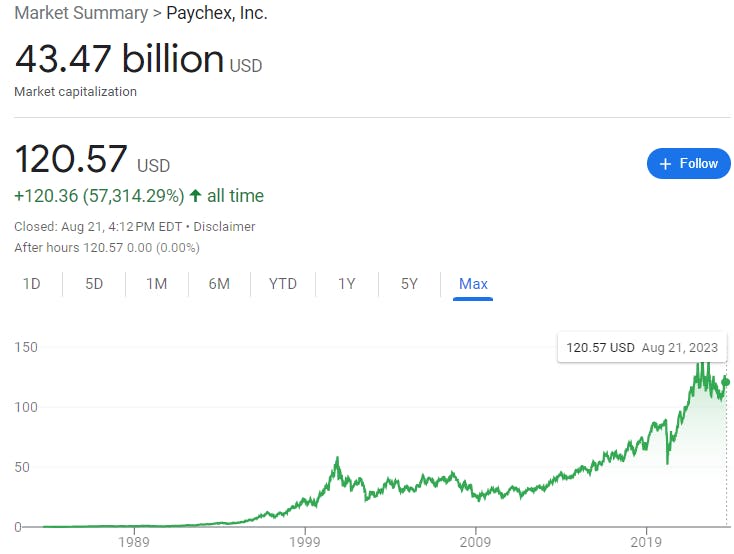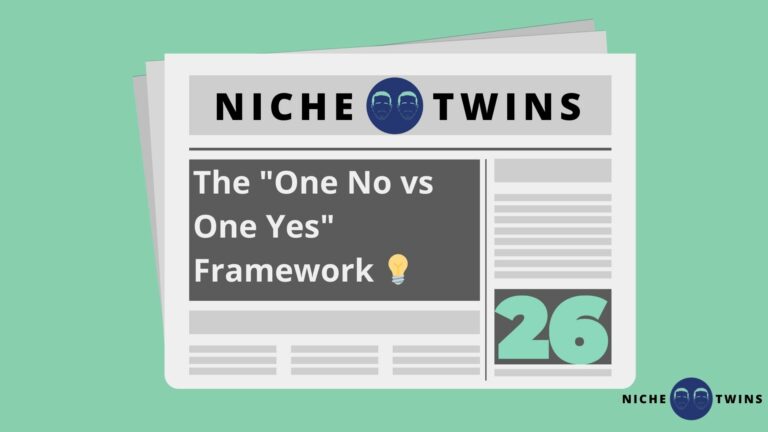About a year ago, I was listening to a business podcast that referenced Sam Altman’s “One no vs One yes” framework.
It was presented as one of the more common reasons why small companies are able to beat large companies.
The phenomenon goes something like this…
Let’s say you’re an employee at a big company and you have a good idea, that sounds like a bad idea. In most cases, your boss, the CEO and everyone in-between has to green light it.
In other words, one “no” can kill you.
But if you’re a startup, you only need one investor to say “yes” to have crack at it. Or better yet, if you’re self-funded or a solopreneur, only YOU have to say “yes”.
In the end it’s a probability distribution. A small company is simply more likely to get one yes than an employee at a big company is to get all yeses.
It’s a profound observation, in a simple wrapper.
I started digging around and reading about different companies that got their start this way.
One company’s story in particular stuck with me…
One “Yes”
In the late 1960s, Tom Golisano was working at Electronic Accounting Service (EAS), a pre-internet company that processed payroll exclusively for large businesses.
During one of Golisano’s morning commutes, a painfully simple and unshakeable realization dawned on him – he was driving by more small businesses than large ones.
He decided to stop at the library after work that day (remember it was pre-internet). It turned out that 98% of US businesses had less than 100 employees, and about 95% had less than 50 employees.
EAS only worked with companies that had at least 50 employees. They also had high minimum charges that squeezed many of the 50 to 100 employee companies out.
Golisano realized there was an entire untapped market out there.
He went to the EAS management team with an idea and a plan for a new division targeting payroll for small businesses.
They would start accepting information over the phone instead of the complex snail mail forms they currently required and they would start doing their client’s payroll tax returns. Both of these changes would mean they could lower their prices and increase margins, unlocking an entirely new customer base.
Management’s response?
They simply didn’t see the value in the low end of the market.
Their answer was no.
Golisano waited a few months and tried again.
Again, the answer was no.
This time he handed in his resignation.
He now had his one “yes”.
So in 1971, with just $3000 and a few credit cards, he started out on his own in Rochester, New York.
The early road was a struggle.
After maxing out all his cards, he had to call in a few favors from some banker friends to get consumer loans approved. When those loans dried up, and the company was on the brink of failure, he turned to his sister Marie.
Marie, a disabled widow and single mother of three, offered up her late husband’s insurance money to keep her brother’s dream alive. She said he was welcome to take as much of the $41,000 as he needed.
Talk about a leap of faith.
It took Golisano 4 years to reach a total of 300 clients and break even.
Today, nearly 50 years later, Paychex acquires over 2000 new clients a week and is worth over $43 billion.

*Guess who ended up being significant shareholders of Paychex? That’s right, Marie and her three kids. Pretty unbelievable outcome.*
So What?
Tom Golisano’s story is inspirational for a lot of obvious reasons. But the main reason it left such a lasting impression on me is because it shined a light on just how many more opportunities (big and small) exist today…
First, Golisano was able to spot a huge underserved audience, pre-internet.
We happen to be alive during a point in time when it’s easier than ever to identify and connect with the entire world.
What’s more, is even customer niches that sound small on paper are often much larger than we realize.
As Morning Brew’s Austin Rief, recently said when speaking about the total addressable market (TAM) of any given niche:
“The internet is bigger than you can imagine…everything is 10 to 50x more than you think, which leads to so much opportunity“.
Second, Golisano didn’t create an entirely new business.
He simply copied exactly what was working, found a few ways to make it more efficient and reached the right audience at the right time.
Too often we get paralyzed by thinking we need to create something entirely new. When the reality is, you don’t need a novel business idea to start a successful business.
There is boundless opportunity in copying what is working, and putting your own unique spin on it.
Third, the main reason why EAS didn’t go after small businesses in the first place is they couldn’t see the value in pursuing the low end of the market.
The perceived low end of the market is exactly where many niche site owners, solopreneurs and small businesses make a killing.
Large companies typically don’t have the time or resources to be bothered with the ‘bottom of the barrel’. After all, $5k, $20k, $50k a month isn’t even a rounding error for these businesses.
But for most people on earth, that amount of additional income is life changing.
Opportunity, opportunity, opportunity.
All three of these elements from the Paychex story play a role, albeit on a much smaller scale, in the way Mike and I have been thinking about the new project we’re currently pursuing (more to come on this later).
The bottom line is this – today, without anyone’s permission and without needing to quit your job, you can spin up an online business.
To get started, you just need one “yes”…from YOU.
What a time to be alive.
Alright, that’s all for now.
Mike and I are off to New Hampshire to celebrate our friends Dan and Sam’s wedding (we love you guys!!).
Have a weekend. ✌
-Keith

Niche Twins newsletter sent weekly on Fridays at 8:30 AM ET


